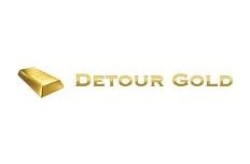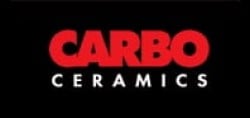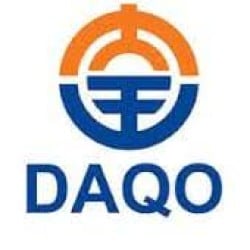&l;img class=&q;dam-image shutterstock wp-image-692902246 size-large&q; src=&q;https://specials-images.forbesimg.com/dam/imageserve/692902246/960x0.jpg?fit=scale&q; alt=&q;&q; data-height=&q;468&q; data-width=&q;960&q;&g; How to evaluate your 401k plan investment options. Shutterstock
&l;p class=&q;p1&q;&g;&l;span class=&q;s1&q;&g;&l;b&g;Choose&a;nbsp;The Manager Not The Fund&l;/b&g;&l;/span&g;&l;/p&g;
About the biggest mistake you can make is to choose a mutual because of its superior track record only to discover that the manager who&a;nbsp;produced those returns has been replaced.&a;nbsp;Mutual funds change managers all the time, but they keep advertising the fund&s;s track record just the same.
&l;p class=&q;p1&q;&g;&l;span class=&q;s1&q;&g;In most cases, it takes 10 years before a track record is long enough to say whether&a;nbsp;a manager has exhibited investment skill. You want managers who have outperformed both the S&a;amp;P 500 and the benchmark&a;nbsp;for their&a;nbsp;category. In other words, if you are looking at a tech-fund manager, you want one that has outperformed by the S&a;amp;P 500, and the technology index.&l;/span&g;&l;/p&g;
&l;strong&g;17&a;nbsp;Fund Managers Pass Muster&l;/strong&g;
Morningstar&s;s mutual fund database&a;nbsp;returned&a;nbsp;17 no-load mutual funds that are still open to new investors and whose managers have been at the helm for 10 years, long enough to prove their skill. All have outperformed the S&a;amp;P 500&s;s 10 year return of 10.61% and their category benchmark by enough of a margin to make a difference to investors.
&l;div class=&q;table-wrapper&q;&g;&l;table&g;&l;tbody&g;&l;tr&g;&l;th&g;Fund Name&l;/th&g; &l;th&g;Symbol&l;/th&g; &l;th&g;1-Year Return&l;/th&g; &l;th&g;10-Year Return&l;/th&g; &l;th&g;Manager&l;/th&g; &l;th&g;10-year Return +/- Category&l;/th&g; &l;/tr&g;&l;tr&g;&l;td&g;Berkshire Focus&l;/td&g; &l;td&g;BFOCX&l;/td&g; &l;td&g;43.63&l;/td&g; &l;td&g;17.66&l;/td&g; &l;td&g;Malcolm R. Fobes&l;/td&g; &l;td&g;3.86&l;/td&g; &l;/tr&g;&l;tr&g;&l;td&g;Firsthand Technology Opportuni&l;/td&g; &l;td&g;TEFQX&l;/td&g; &l;td&g;43.57&l;/td&g; &l;td&g;17.59&l;/td&g; &l;td&g;Kevin M. Landis&l;/td&g; &l;td&g;3.79&l;/td&g; &l;/tr&g;&l;tr&g;&l;td&g;Jacob Internet Inv&l;/td&g; &l;td&g;JAMFX&l;/td&g; &l;td&g;29.83&l;/td&g; &l;td&g;14.45&l;/td&g; &l;td&g;Francis J. Alexander&l;/td&g; &l;td&g;0.66&l;/td&g; &l;/tr&g;&l;tr&g;&l;td&g;VALIC Company I Science &a;amp; Tech&l;/td&g; &l;td&g;VCSTX&l;/td&g; &l;td&g;29.47&l;/td&g; &l;td&g;15.21&l;/td&g; &l;td&g;Huachen Chen&l;/td&g; &l;td&g;1.42&l;/td&g; &l;/tr&g;&l;tr&g;&l;td&g;T. Rowe Price Blue Chip Growth&l;/td&g; &l;td&g;TRBCX&l;/td&g; &l;td&g;27.62&l;/td&g; &l;td&g;13.61&l;/td&g; &l;td&g;Larry J. Puglia&l;/td&g; &l;td&g;2.8&l;/td&g; &l;/tr&g;&l;tr&g;&l;td&g;Red Oak Technology Select&l;/td&g; &l;td&g;ROGSX&l;/td&g; &l;td&g;26.12&l;/td&g; &l;td&g;16.53&l;/td&g; &l;td&g;Mark W. Oelschlager&l;/td&g; &l;td&g;2.73&l;/td&g; &l;/tr&g;&l;tr&g;&l;td&g;PRIMECAP Odyssey Growth&l;/td&g; &l;td&g;POGRX&l;/td&g; &l;td&g;26.00&l;/td&g; &l;td&g;13.66&l;/td&g; &l;td&g;Joel P. Fried&l;/td&g; &l;td&g;2.85&l;/td&g; &l;/tr&g;&l;tr&g;&l;td&g;Reynolds Blue Chip Growth&l;/td&g; &l;td&g;RBCGX&l;/td&g; &l;td&g;24.51&l;/td&g; &l;td&g;13.63&l;/td&g; &l;td&g;Frederick L. Reynolds&l;/td&g; &l;td&g;2.81&l;/td&g; &l;/tr&g;&l;tr&g;&l;td&g;Delaware Healthcare I&l;/td&g; &l;td&g;DLHIX&l;/td&g; &l;td&g;23.06&l;/td&g; &l;td&g;18.69&l;/td&g; &l;td&g;Liu-Er Chen&l;/td&g; &l;td&g;5.01&l;/td&g; &l;/tr&g;&l;tr&g;&l;td&g;Fidelity&a;reg; Select Medical Tech&l;/td&g; &l;td&g;FSMEX&l;/td&g; &l;td&g;22.93&l;/td&g; &l;td&g;14.78&l;/td&g; &l;td&g;Edward L. Yoon&l;/td&g; &l;td&g;1.1&l;/td&g; &l;/tr&g;&l;tr&g;&l;td&g;USAA Science &a;amp; Technology&l;/td&g; &l;td&g;USSCX&l;/td&g; &l;td&g;19.66&l;/td&g; &l;td&g;14.26&l;/td&g; &l;td&g;John F. Averill&l;/td&g; &l;td&g;0.47&l;/td&g; &l;/tr&g;&l;tr&g;&l;td&g;Monetta Young Investor&l;/td&g; &l;td&g;MYIFX&l;/td&g; &l;td&g;19.00&l;/td&g; &l;td&g;14.14&l;/td&g; &l;td&g;Robert S. Bacarella&l;/td&g; &l;td&g;3.32&l;/td&g; &l;/tr&g;&l;tr&g;&l;td&g;Buffalo Discovery&l;/td&g; &l;td&g;BUFTX&l;/td&g; &l;td&g;15.89&l;/td&g; &l;td&g;13.75&l;/td&g; &l;td&g;Clay Brethour&l;/td&g; &l;td&g;3.63&l;/td&g; &l;/tr&g;&l;tr&g;&l;td&g;Fidelity&a;reg; Select Biotechnology&l;/td&g; &l;td&g;FBIOX&l;/td&g; &l;td&g;15.12&l;/td&g; &l;td&g;16.61&l;/td&g; &l;td&g;Rajiv Kaul&l;/td&g; &l;td&g;2.93&l;/td&g; &l;/tr&g;&l;tr&g;&l;td&g;Matthew 25&l;/td&g; &l;td&g;MXXVX&l;/td&g; &l;td&g;14.98&l;/td&g; &l;td&g;13.56&l;/td&g; &l;td&g;Mark Mulholland&l;/td&g; &l;td&g;4.11&l;/td&g; &l;/tr&g;&l;tr&g;&l;td&g;Pin Oak Equity&l;/td&g; &l;td&g;POGSX&l;/td&g; &l;td&g;14.62&l;/td&g; &l;td&g;14.35&l;/td&g; &l;td&g;Mark W. Oelschlager&l;/td&g; &l;td&g;4.91&l;/td&g; &l;/tr&g;&l;tr&g;&l;td&g;Oppenheimer Global Opportuniti&l;/td&g; &l;td&g;OGIYX&l;/td&g; &l;td&g;22.47&l;/td&g; &l;td&g;13.86&l;/td&g; &l;td&g;Frank V. Jennings&l;/td&g; &l;td&g;7.46&l;/td&g; &l;/tr&g;&l;/tbody&g;&l;/table&g;&l;/div&g;
Great fund managers are few and far between and many are closed to new investors. If any of these funds are available in your 401(k) plan, choose them for at least the minimum initial investment to preserve your&a;nbsp;right to invest more down the line.
&l;span&g;This article is part of&a;nbsp;a series I write for&a;nbsp;those who&a;nbsp;invest in mutual funds.&a;nbsp;To be notified when the next installment is published,&a;nbsp;&l;/span&g;&l;a href=&q;https://paths.marketocracy.com/lists/?p=subscribe&a;amp;id=38&q; target=&q;_blank&q;&g;click here&l;/a&g;&l;span&g;.&l;/span&g;




 Brokerages forecast that CARBO Ceramics Inc. (NYSE:CRR) will announce ($0.53) earnings per share (EPS) for the current fiscal quarter, according to Zacks. Two analysts have issued estimates for CARBO Ceramics’ earnings, with estimates ranging from ($0.57) to ($0.50). CARBO Ceramics reported earnings of ($0.93) per share in the same quarter last year, which suggests a positive year over year growth rate of 43%. The firm is scheduled to announce its next earnings report on Thursday, July 26th.
Brokerages forecast that CARBO Ceramics Inc. (NYSE:CRR) will announce ($0.53) earnings per share (EPS) for the current fiscal quarter, according to Zacks. Two analysts have issued estimates for CARBO Ceramics’ earnings, with estimates ranging from ($0.57) to ($0.50). CARBO Ceramics reported earnings of ($0.93) per share in the same quarter last year, which suggests a positive year over year growth rate of 43%. The firm is scheduled to announce its next earnings report on Thursday, July 26th. Wall Street brokerages forecast that NovoCure (NASDAQ:NVCR) will report ($0.15) earnings per share (EPS) for the current quarter, according to Zacks Investment Research. Four analysts have made estimates for NovoCure’s earnings. The lowest EPS estimate is ($0.19) and the highest is ($0.11). NovoCure reported earnings per share of ($0.24) in the same quarter last year, which suggests a positive year over year growth rate of 37.5%. The firm is scheduled to issue its next quarterly earnings results on Thursday, July 26th.
Wall Street brokerages forecast that NovoCure (NASDAQ:NVCR) will report ($0.15) earnings per share (EPS) for the current quarter, according to Zacks Investment Research. Four analysts have made estimates for NovoCure’s earnings. The lowest EPS estimate is ($0.19) and the highest is ($0.11). NovoCure reported earnings per share of ($0.24) in the same quarter last year, which suggests a positive year over year growth rate of 37.5%. The firm is scheduled to issue its next quarterly earnings results on Thursday, July 26th. Boston Partners reduced its stake in shares of Daqo New Energy (NYSE:DQ) by 36.6% in the first quarter, according to the company in its most recent 13F filing with the Securities and Exchange Commission (SEC). The institutional investor owned 56,977 shares of the semiconductor company’s stock after selling 32,859 shares during the quarter. Boston Partners owned about 0.54% of Daqo New Energy worth $2,789,000 as of its most recent filing with the Securities and Exchange Commission (SEC).
Boston Partners reduced its stake in shares of Daqo New Energy (NYSE:DQ) by 36.6% in the first quarter, according to the company in its most recent 13F filing with the Securities and Exchange Commission (SEC). The institutional investor owned 56,977 shares of the semiconductor company’s stock after selling 32,859 shares during the quarter. Boston Partners owned about 0.54% of Daqo New Energy worth $2,789,000 as of its most recent filing with the Securities and Exchange Commission (SEC).